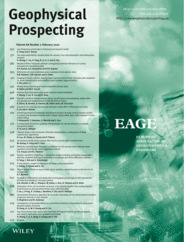-
oa Wavelet transform‐based seismic facies classification and modelling: application to a geothermal target horizon in the NE German Basin
- Source: Geophysical Prospecting, Volume 68, Issue 2, Jan 2020, p. 466 - 482
-
- 12 Feb 2019
- 12 Jul 2019
- 10 Sep 2019
Abstract
At the geothermal test site near Groß Schönebeck (NE German Basin), a new 3D seismic reflection survey was conducted to study geothermal target layers at around 4 km depth and 150°C. We present a workflow for seismic facies classification and modelling which is applied to a prospective sandstone horizon within the Rotliegend formation. Signal attributes are calculated along the horizon using the continuous Morlet wavelet transform. We use a short mother wavelet to allow for the temporal resolution of the relatively short reflection signals to be analysed. Time‐frequency domain data patterns form the input of a neural network clustering using self‐organizing maps. Neural model patterns are adopted during iterative learning to simulate the information inherent in the input data. After training we determine a gradient function across the self‐organizing maps and apply an image processing technique called watershed segmentation. The result is a pattern clustering based on similarities in wavelet transform characteristics. Three different types of wavelet transform patterns were found for the sandstone horizon. We apply seismic waveform modelling to improve the understanding of the classification results. The modelling tests indicate that thickness variations have a much stronger influence on the wavelet transform response of the sandstone horizon compared with reasonable variations of seismic attenuation. In our interpretation, the assumed thickness variations could be a result of variable paleo‐topography during deposition of predominantly fluvial sediments. A distinct seismic facies distribution is interpreted as a system of thicker paleo‐channels deposited within a deepened landscape. The results provide constraints for the ongoing development of the geothermal test site.




